As you may have noticed, we are going through some changes. Don’t let the empty shelves concern you though; we are transferring older items that don’t get a lot of use to Downsview, our off-site shelving facility. These items are still available, but it takes a couple days to get them.

When all the shifting and transferring is done, our shelves will have the newest, most relevant material, arranged neatly in a more accessible way. Our shelves will go from “no more room packed” to browsable and current.
In some areas of our library, this will mean close to one-third of our titles will be transferred to Downsview.
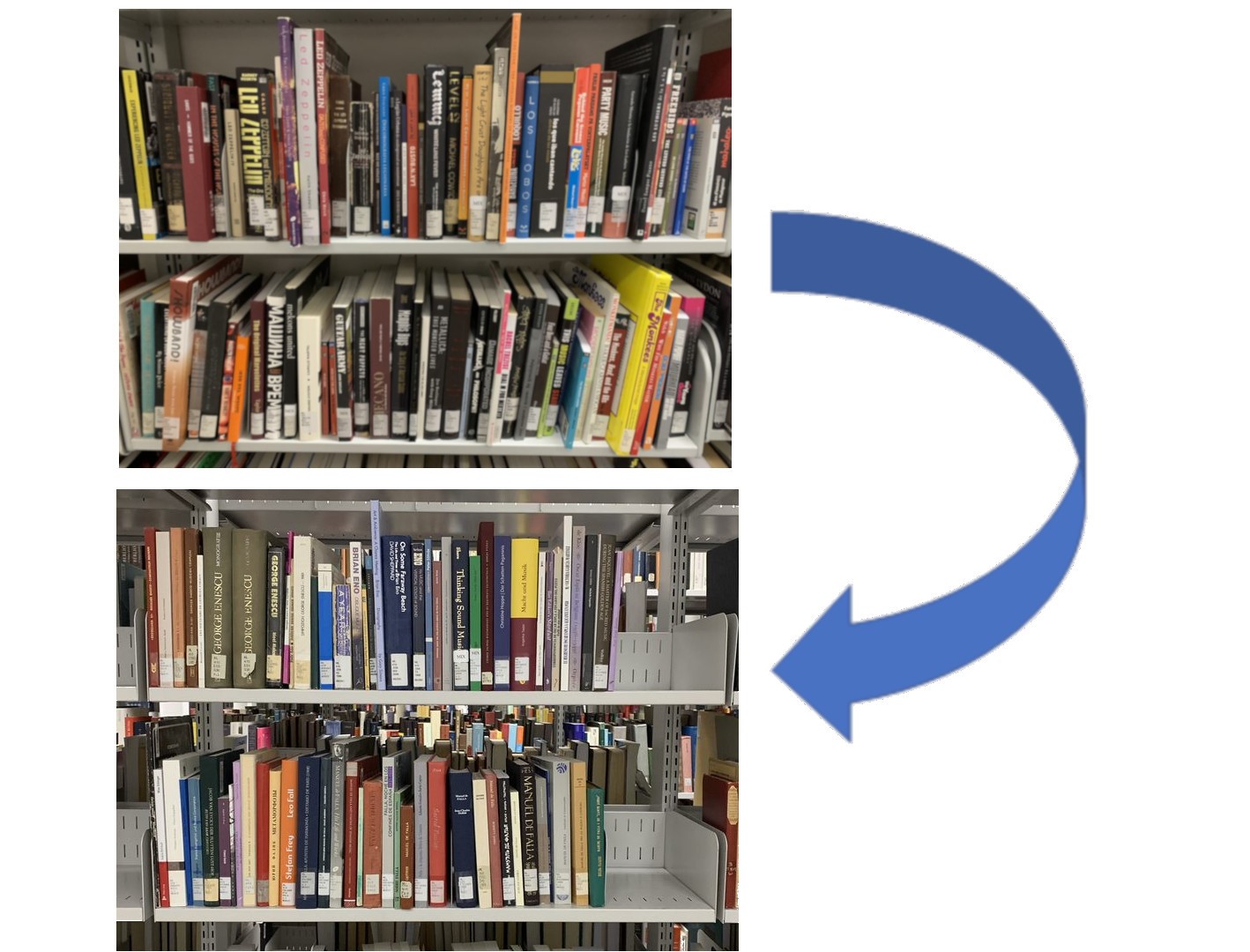
In our area on history books by region (ML197 to ML360), for example, there were 3,632 titles in the library. After analyzing this subject area, we found that 1,355 titles met our weeding criteria. Our criteria includes: publication date (over 20 years ago); acquisition date (we've had them for at least 15 years); circulation statistics (less than 10 times, and the last time was over 10 years ago); and our own knowledge and expertise of the collection (i.e., eyeballs in the stacks).
Of course, this doesn’t mean these books are not valuable, just not getting a lot of use. They may be the perfect title for you though. So, we’ve done all we can to make them as discoverable in our catalogue as possible.
Titles in languages other than English, for example, are disproportionally represented in this weeding project. So, to help ensure that they can be found we made efforts to include subject headings in languages that suit the material. “La vie musicale au Canada francais”, for example.
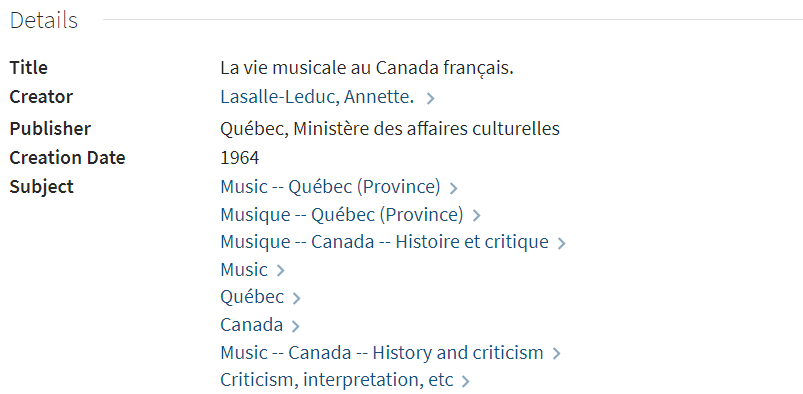
With this title we see subject headings in both French and English to help with multi-lingual searching and refining search results with facets.
We’ve also attempted to add non-Roman scripts to records where appropriate, for example:
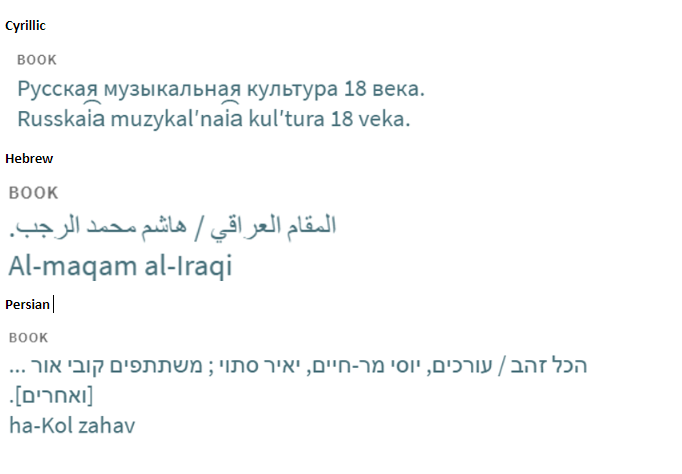
We’ve also been adding descriptive elements to the catalogue records where possible. So, again for the “history by region” subject area we added content notes, summaries, performer and language notes to many records.
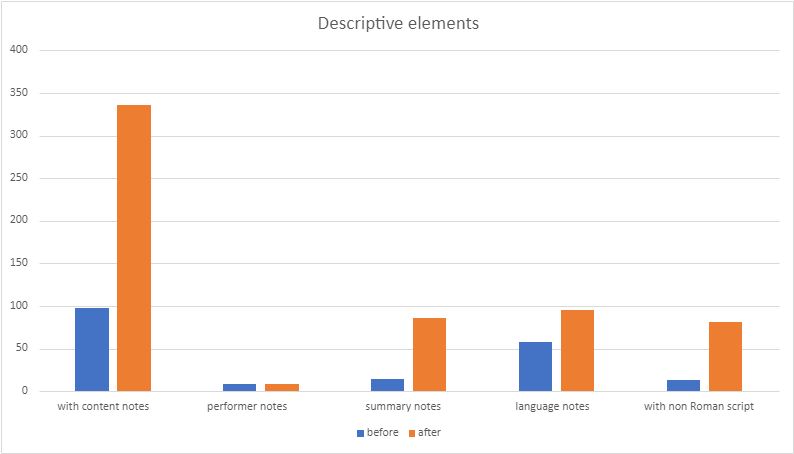
This example shows what a summary and contents notes can add to a bibliographic record:
Before summary
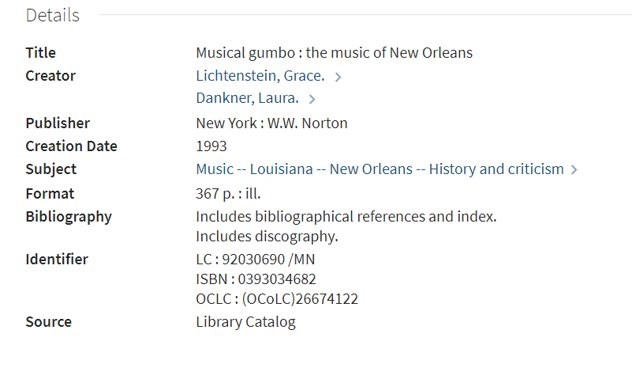
After summary
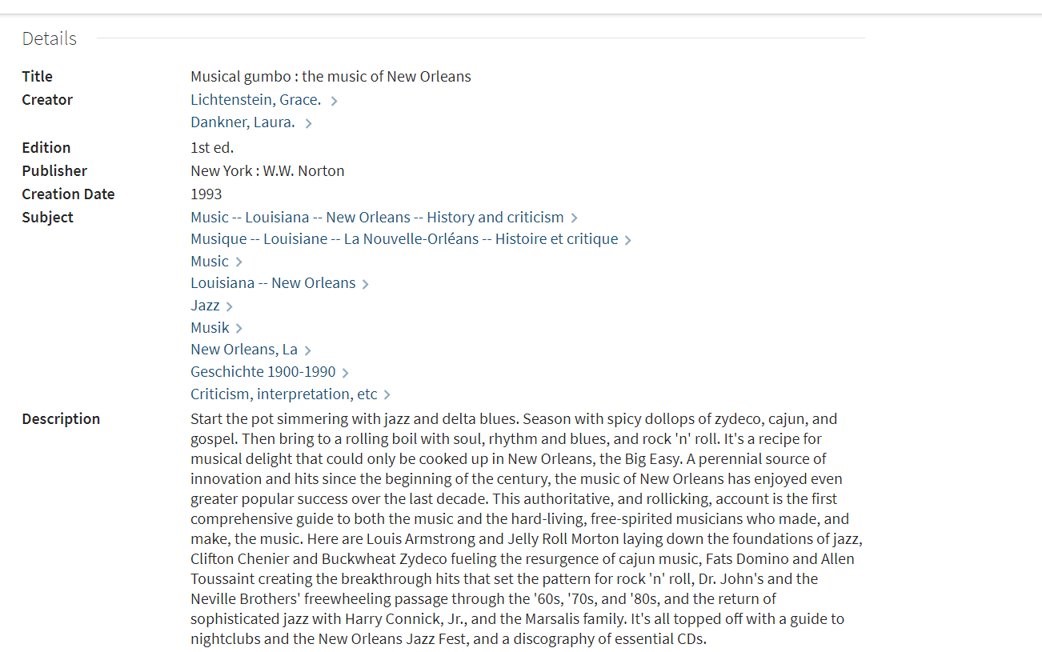
Before contents
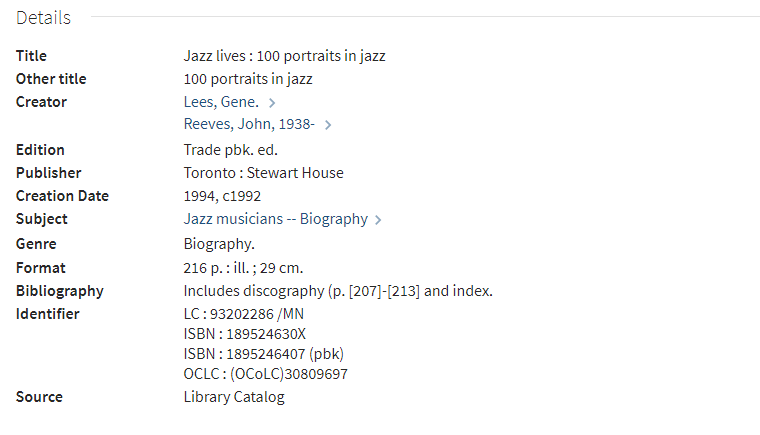
After contents
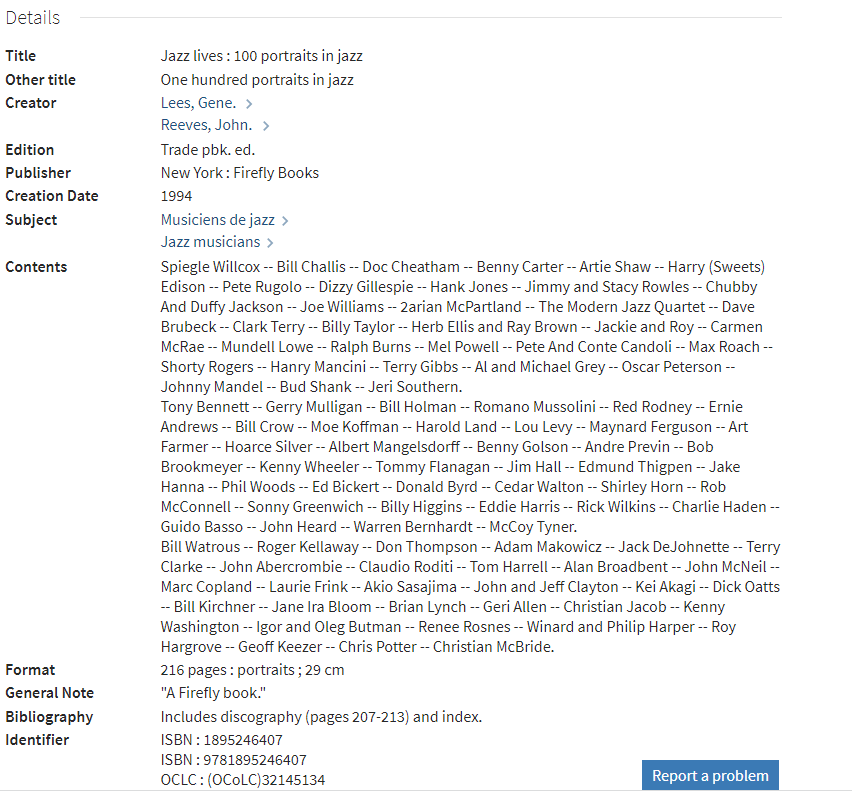
This work will take some time, so bear with us. In the end the collection will be more browsable and discoverable in the catalogue, whether the material is stored on site or off site. And, perhaps most important, we will have room to grow.